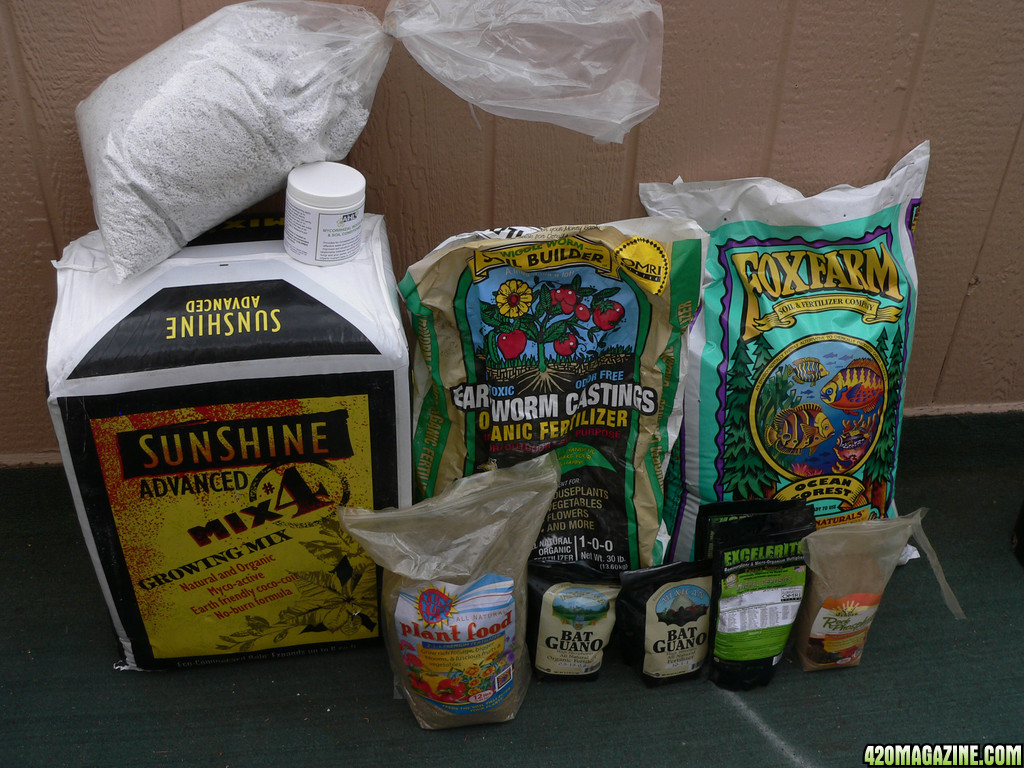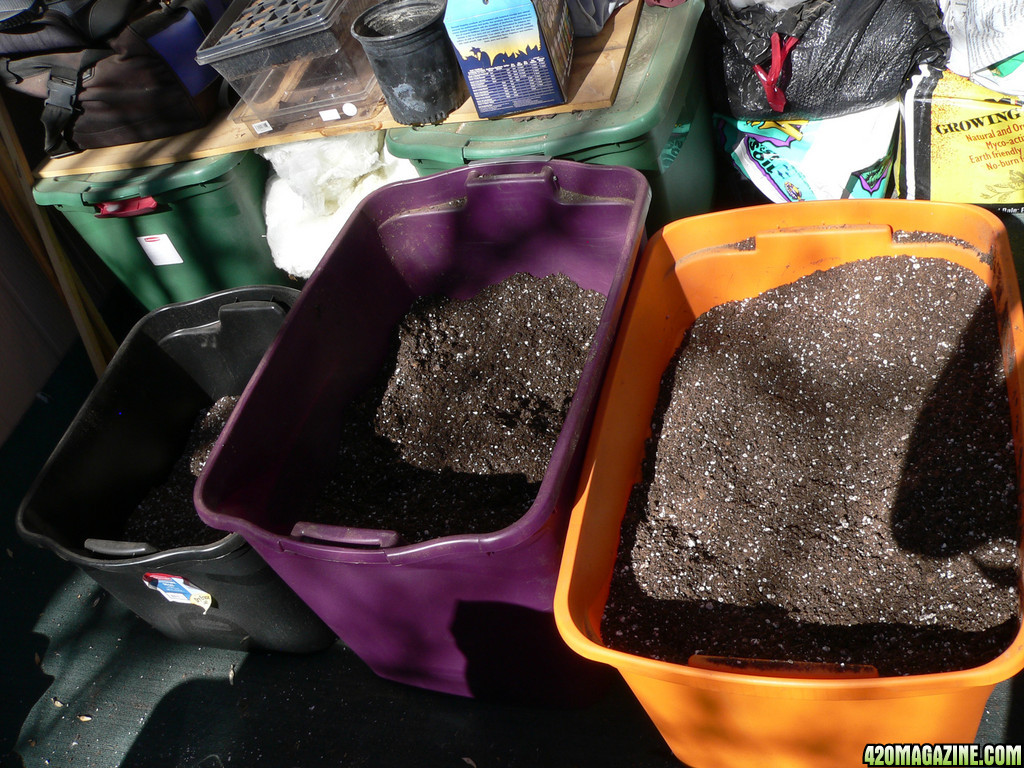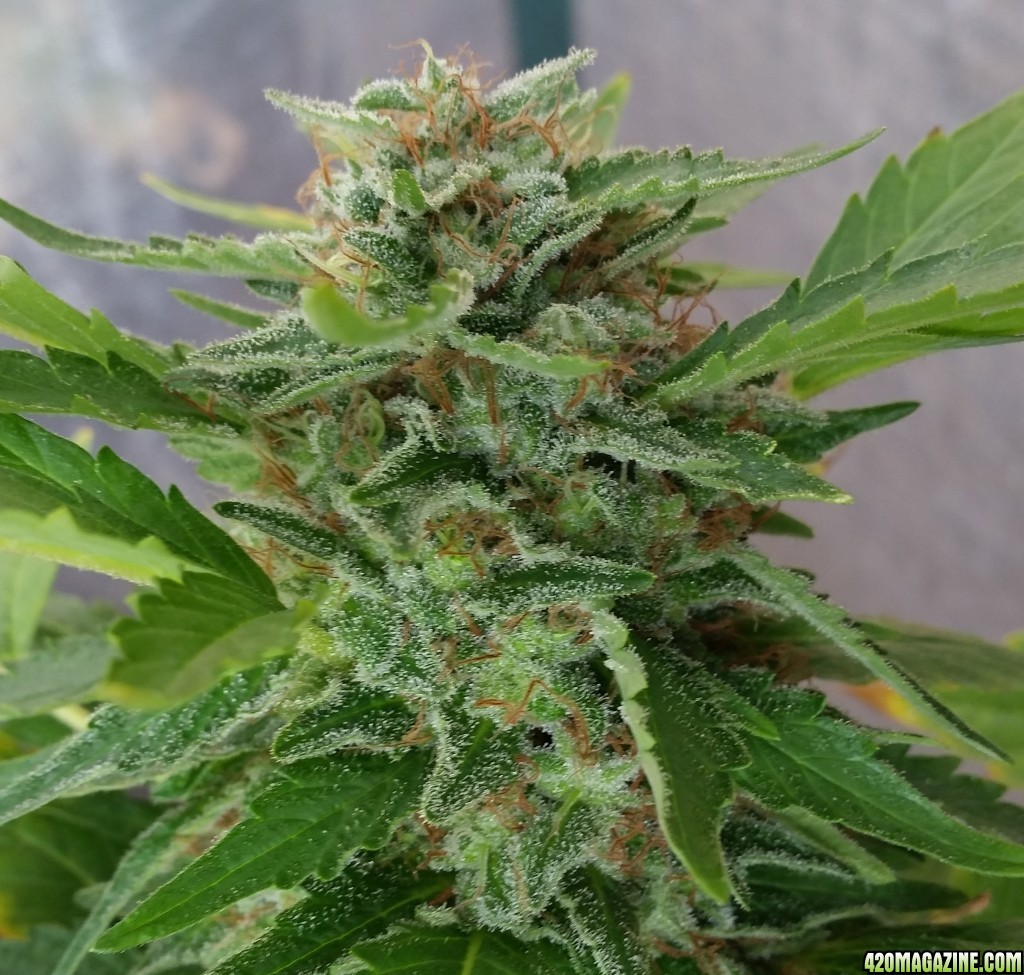Medium and feeding:
I'm growing in complete organic soil mixes. I use three slightly different mixes; one for seedlings, one for vegetative growth, and one for flowering.
For the seedling mix I combined 3 gallons of Sunshine #4, 1 gallon of FFOF, one gallon of chunky perlite, and 1/2 cup of granulated mixed mycorrizial inoculate. There is plenty of food in the FFOF to feed the seedlings, the Sunshine is not nutrient rich at all, and the perlite improves drainage. Seedlings like this lean, well draining soil.
The base for both the veg and flower soils is the same. Nine gallons of Sunshine #4, three gallons of FFOF, three gallons of worm castings, one and a half gallons of chunky perlite, six cups of Yum-Yum mix, and two cups of Excelerite. Here is a blurb from the Excellerite web-site about this product:
"U.S. Rare Earth Minerals has been blessed with the rights to mine what is widely considered the rarest source of ancient lake bed sediments in Panaca Nevada found to date. A host of scientists recognize it as the richest known source in the world for natural occurring macro, micro and nano nutrients. These minerals and trace elements have been naturally chelated in the presence of Humic and Fulvic acids to produce the powerful combination of Panaca minerals that we call Excelerite; Excelerite is approved by the Organic Materials Review Institude (OMRI) listed, and may be used in certified organic production or food processing and handling according to the USDA National Organic Program Rule.
Yum-Yum mix contains:
Alfalfa Meal: Nitrogen; Vitamins-A, B, E, carotene, thiamine, biotin, pantothenic acid, niacin, riboflavin, folic acid, choline; 16 amino acids, co-enzymes, sugars, starches, protein fiber.
Cottonseed Meal: Nitrogen, Phosphorus, Potassium.
Kelp Meal: Nitrogen; Potassium; Vitamins-A, B, B2 , C, calcium, pantothenate, niacin, folic acid; minerals-barium, boron, calcium, cobalt, copper, fluorine, iron, magnesium, manganese, molybdenum, nickel, sodium, strontium, sulfur, zinc; 17 amino acids.
Greensand: Iron, Potassium, Silicate, Phosphorus, 30 trace elements.
Rock Dust: Calcium, Sulfur, Magnesium, Boron, Cobalt.
Rock Phosphate: Phosphorus, Calcium, Trace Elements.
Humate: Salts of Humic Acid - improve soil characteristics and aids in releasing other nutrients to plants in usable forms.
Dry Molasses: Carbohydrates, Sugars, Trace Elements - feeds and attracts beneficial soil organisms.
Guaranteed Analysis -Total Nitrogen (N) - 2.0% - Available Phosphate (P2O5) - 1.0%. Soluble Potash (K2O) - 1.0%.
The Yum-Yum is great stuff - a well balanced amendment. It won't burn plants. I've actually put the stuff in my mouth and tasted it - not bad at all.
The only other thing the veg soil gets is 1 cup of 10-1-1 Mexican bat guano.
The flower soil has no Mexican guano. It gets 1 cup of 0.5-13-0.2 Indonesian bat guano, and 1 cup of soft rock phosphate.
Over the course of a couple of grows I've never seen a deficiency or lockout in these mediums. I don't feed the plants anything else. They just get RO water. Well, I have done some minor top-dressing with a little Yum-Yum once or twice but for the most part just RO water. Three previous grows in these soils has produced solid brix readings - harvests at 17.5 and 16, and 16.5.









